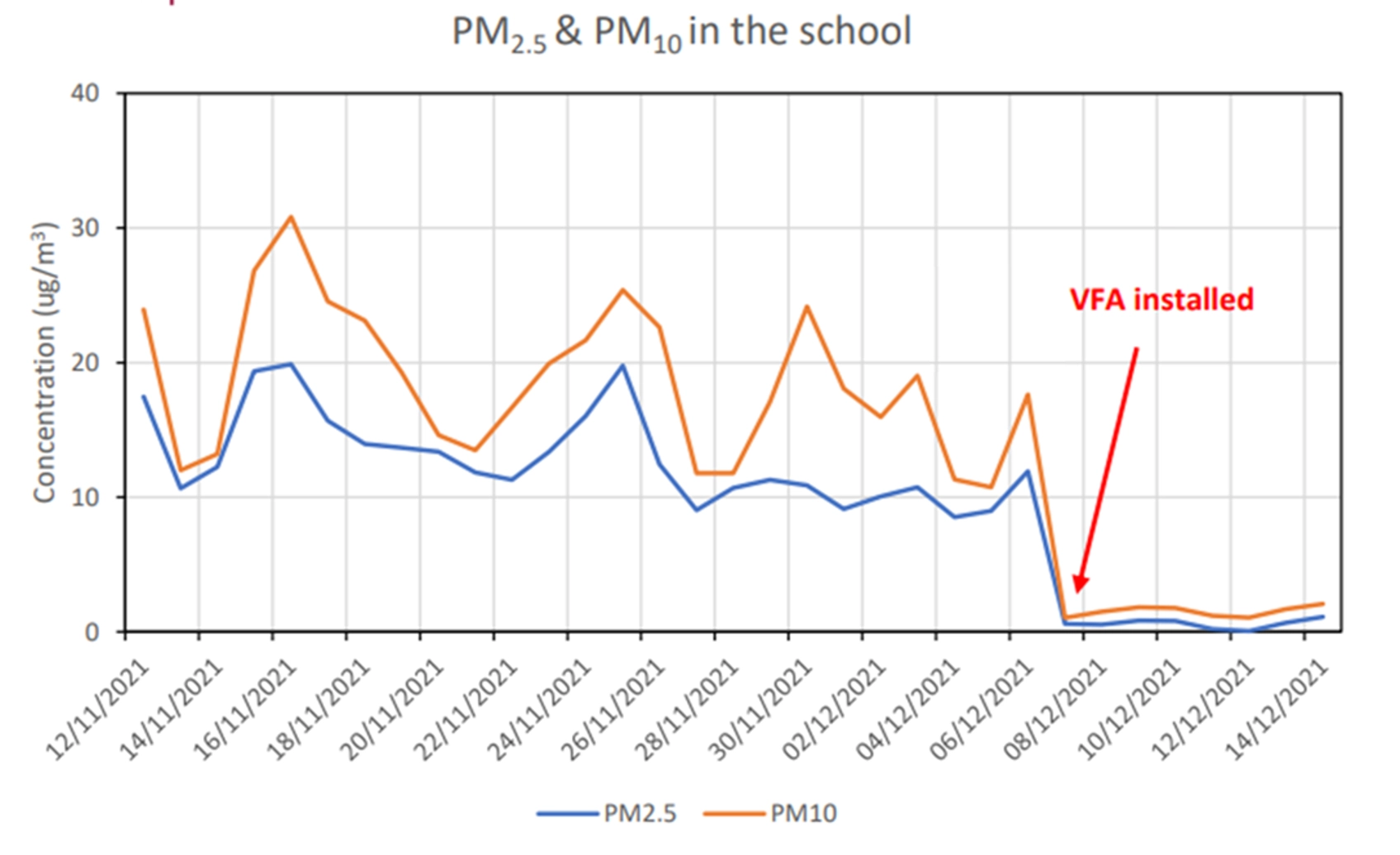Universiteit Antwerpen: Reducing Airborne Contaminants in Classrooms with ASPRA Purification
Eliminating Poor Air Quality in Schools with ASPRA Air Purification
Many classrooms struggle with poor ventilation, leading to high levels of aerosols, particulate matter (PM), and airborne pollutants. Older school buildings, in particular, face challenges installing mechanical ventilation, leaving windows and doors as the only option—causing heat loss, discomfort, and energy inefficiency.
To address these issues, Universiteit Antwerpen implemented ASPRA recirculation air purifiers, significantly improving indoor air quality without the need for costly ventilation renovations. These systems increased air changes per hour (ACH), reducing aerosols, PM, and allergens, while also saving energy by limiting heat loss. A six-month study confirmed major improvements in air quality, infection control, and classroom comfort.





About the Project
Many schools, particularly those in older buildings, struggle with insufficient ventilation. Traditional mechanical systems are often too costly to install, leaving window ventilation as the only alternative. However, keeping windows and doors open leads to significant energy loss, cold classrooms in winter, and exposure to outdoor pollutants from nearby roads or industrial areas.
To combat these challenges, Universiteit Antwerpen installed ASPRA recirculation air purifiers in classrooms and hallways. These systems enhanced indoor air quality by increasing the air change rate (ACH) to safe levels, filtering out viruses, bacteria, and particulate matter while keeping windows closed. Over six months of scientific evaluation, ASPRA technology was proven to significantly reduce airborne contaminants, ensuring clean, safe, and energy-efficient classrooms.
Client
Sector
Location
Product

Summary
1. Problem
Insufficient ventilation in classrooms leads to high aerosol and PM concentrations, increased infection risks, and heat loss from open windows.
2. Solution
ASPRA recirculation air purifiers were installed to increase air exchange rates (ACH) and filter airborne pollutants without needing costly ventilation upgrades.
3. Result
A healthier classroom environment with reduced aerosols and PM, lower energy costs, and improved student and teacher comfort.
Highlights
Increased air exchange rate (ACH) to safe levels in classrooms.
Major reduction in aerosols and particulate matter, improving air quality and student well-being.
Lower energy costs by eliminating the need for window ventilation in winter.
Scientifically validated effectiveness through a six-month study by Universiteit Antwerpen.
Detailed Approach

Problem Description
Many schools rely on natural ventilation, which is insufficient to maintain healthy indoor air quality. Most classrooms lack mechanical ventilation, leading to poor air exchange rates (ACH) and increased risk of airborne infections.
Additionally, schools in urban areas face an extra challenge—opening windows reduces CO₂ levels but introduces outdoor pollutants such as PM, allergens, and traffic emissions. During winter, open windows lead to heat loss and higher energy bills, making this an inefficient and unsustainable solution.

The Solution
To improve air quality without costly renovations, Universiteit Antwerpen installed ASPRA Lite and ASPRA Aura recirculation air purifiers in classrooms and hallways. These compact, easy-to-install units increased air exchange rates (ACH) while filtering out aerosols, PM, and airborne pathogens.
By removing airborne contaminants at the source, ASPRA purifiers prevented virus spread and ensured consistently clean air. Their flexible installation options (wall-mounted, ceiling, or floor-standing) allowed seamless integration into existing classrooms. This approach improved air quality while reducing heating costs, eliminating the need for excessive window ventilation.


The Result
After six months of scientific evaluation, the University of Antwerp reported a significant improvement in classroom air quality. ASPRA technology effectively reduced aerosols and PM levels, ensuring a safer learning environment for students and teachers.
Additionally, schools achieved major energy savings by reducing heat loss from open windows. With better air quality and optimized energy efficiency, this project highlights ASPRA’s long-term benefits for schools looking for cost-effective, sustainable air purification solutions.
More Projects in Education
Contact & Services
Contact our experts for tailor-made advice:
.svg)
